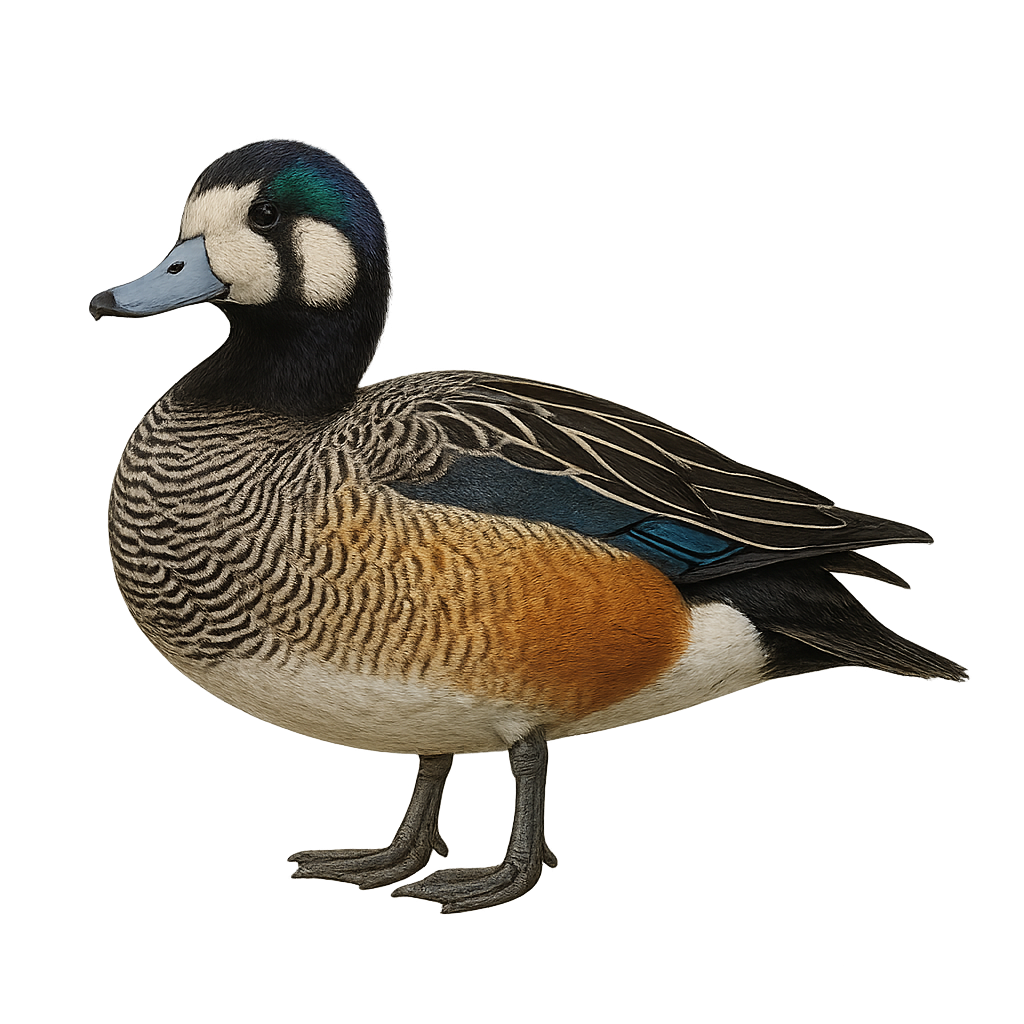Your wildlife photography guide.
Explore the chiloe wigeon in detail, study its behavior, prepare your shots.
Where to observe and photograph the chiloe wigeon in the wild
Learn where and when to spot the chiloe wigeon in the wild, how to identify the species based on distinctive features, and what natural environments it inhabits. The WildlifePhotographer app offers tailored photography tips that reflect the chiloe wigeon’s behavior, helping you capture better wildlife images. Explore the full species profile for key information including description, habitat, active periods, and approach techniques.
Chiloe Wigeon
Scientific name: Anas sibilatrix

IUCN Status: Least Concern
Family: ANATIDAE
Group: Birds
Sensitivity to human approach: Suspicious
Minimum approach distance: 10 m
Courtship display: September to October
Incubation: 25-26 jours
Hatchings: September to November
Habitat:
Wetlands, lakes, rivers
Activity period :
Primarily active during the day, with peak activity in the morning and late afternoon.
Identification and description:
The Chiloe Wigeon, or Anas sibilatrix, is a medium-sized waterfowl known for its distinctive plumage. It features a white head with metallic green bands, a brown back, and a white belly. Its bill is blue-gray with a black tip. Native to South America, it primarily inhabits wetlands, lakes, and rivers. This duck is often seen in small groups and feeds mainly on aquatic plants, insects, and small crustaceans. Although generally not very shy, it can be cautious in the presence of threats. Its breeding season typically extends from spring to summer, and it builds its nest near water, often hidden in dense vegetation.
Recommended lens:
400 mm – adjust based on distance, desired framing (portrait or habitat), and approach conditions.
Photography tips:
To photograph the Chiloe Wigeon, it is advisable to use a telephoto lens of at least 400mm to capture detailed images without disturbing the bird. Look for wetlands or lakes where these ducks are known to gather. Be patient and discreet, approaching slowly to avoid scaring them away. The best lighting for photography is usually found early in the morning or late in the afternoon. Take advantage of these times to capture the beauty of their iridescent plumage.
The WildlifePhotographer App is coming soon!
Be the first to explore the best nature spots, track rutting seasons, log your observations, and observe more wildlife.
Already 1 432 wildlife lovers subscribed worldwide

